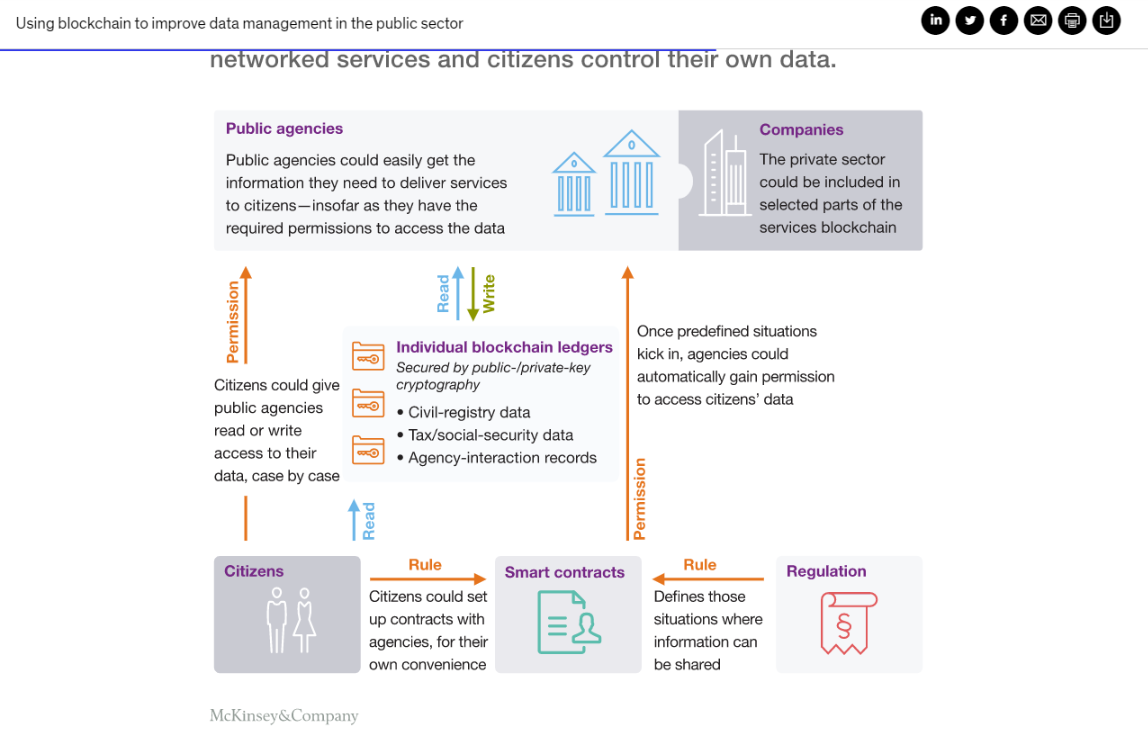The Grants Community Blockchain would allow agencies such as the National Institutes of Health and the Treasury Department to share a blockchain with NSF to keep track of grant applications in order to avoid duplications.
The blockchain would notify member agencies any time that a grant making proposal comes into NSF, which could then determine whether that proposal has been already been funded by a specific agency.
In theory, the Treasury Department could also be on the blockchain so it could directly fund projects after a program officer has approved it. Likewise, universities would be able to see the status of their grant applications through the blockchain.
Using blockchain to improve data management in the public sector
February 2017 | ArticleNSF explores blockchain for grants management
The National Science Foundation is investigating blockchain's potential for making the grants review and award process more efficient.
The Grants Community Blockchain would allow agencies such as the National Institutes of Health and the Treasury Department to share a blockchain with NSF to keep track of grant applications in order to avoid duplication's.
“At NSF, we take ideas from the outside world in the form of proposals, and program officers work to set up panels of reviewers to assess the quality of those ideas,” NSF CIO Dorothy Aronson told GCN. “This blockchain would be a way of helping NSF and other agencies avoid duplication of review and funding of similar ideas so we can fund science more quickly.”
The blockchain would notify member agencies any time that a grantmaking proposal comes into NSF, which could then determine whether that proposal has been already been funded by a specific agency. The information would allow program officers to determine if a proposal would make more sense for another agency to support.
In theory, the Treasury Department could also be on the blockchain so it could directly fund projects after a program officer has approved it. Likewise, universities would be able to see the status of their grant applications through the blockchain.
“The initial thinking is to validate if we can establish blockchain at all to establish a linkage between NIH or another peer agency that we haven’t specifically identified yet,” Aronson said. “The chain over time could be very large and manage many kinds of transactions.”
The goal of this initiative is to reduce the workload for program officers so they can focus on higher-level tasks, like "strategic thinking, traveling and learning,” Aronson said. “While they are reviewing proposals, they don’t have the opportunity" to attend conferences and to learn about more cutting-edge technologies that should be funded by NSF.
“There is a problem in the research environment where we want to know that we are funding the right thing. If we are funding something similar to something someone else is funding, it’s not necessarily the best use of our funds. We are trying to always find the best way of granting the money,” Aronson said.
The work to create the blockchain is being funded by theGeneral Service Administration’s 10x program, which helps to fund small-scale experiments at government agencies.
Sara Friedman is a reporter/producer for GCN, covering cloud, cybersecurity and a wide range of other public-sector IT topics.
Before joining GCN, Friedman was a reporter for Gambling Compliance, where she covered state issues related to casinos, lotteries and fantasy sports. She has also written for Communications Daily and Washington Internet Daily on state telecom and cloud computing. Friedman is a graduate of Ithaca College, where she studied journalism, politics and international communications.
Friedman can be contacted atsfriedman@gcn.comor follow her on Twitter@SaraEFriedman.
Click herefor previous articles by Friedman
Assessing the Potential to Improve Grants Management Using Blockchain Technology
June 2019
Topics: Government Agency Operations, Grants Management, Computer Methodologies, Distributed Ledger/Blockchain
Jasmine A. Faubert, The MITRE Corporation
Tracey G. Amos, The MITRE Corporation
Bianca N. Piccione, The MITRE Corporation
...

